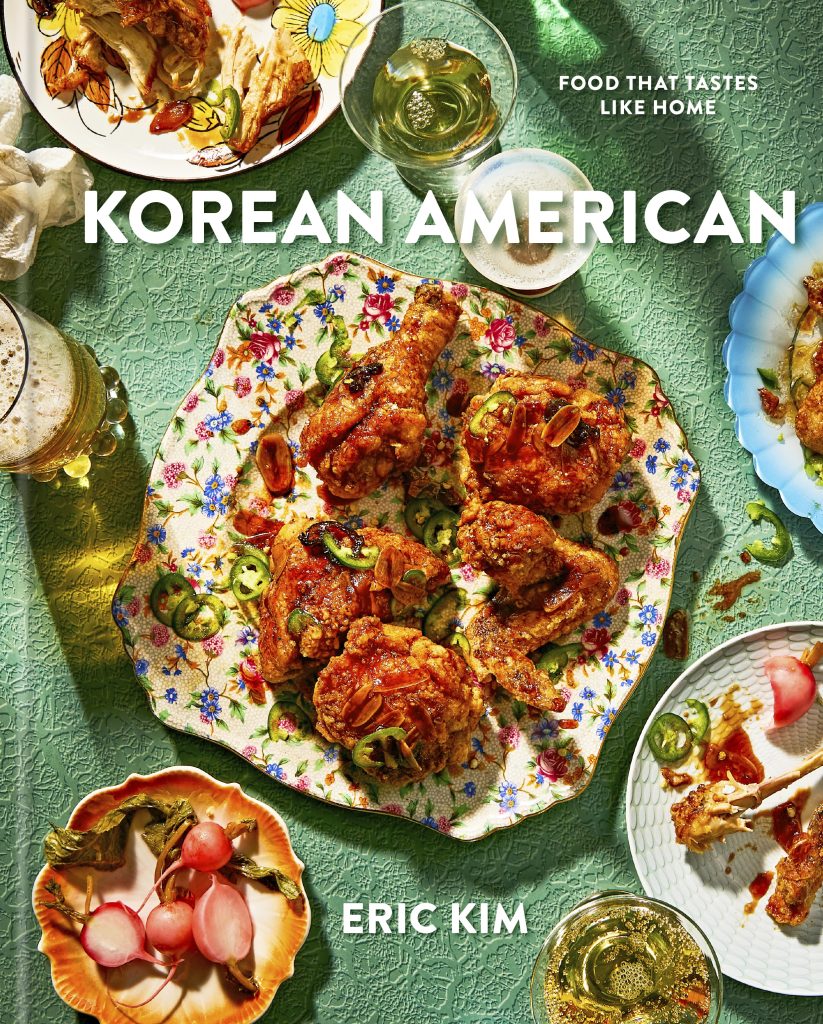New Cookbook “Korean American” Boldly Disrupts the Culinary Canon
Author and chef Eric Kim tells us about the power of surprising flavors and what it means to be Korean American

When food columnist Eric Kim published his second article with The New York Times, he broke out in hives. The article “was about banchan (the collective name that refers to side dishes in Korean cuisine)—a harmless piece,” Kim admits. “But because I was so worried about upsetting Korean people, I got shingles.” His nervousness was not unfounded. In the past, when Kim published his recipes—which typically center on Korean dishes—comments from naysayers quickly follow. “There are some Koreans who think I don’t have a right to talk because I’m American. It’s this constant thing of Koreans telling me I’m not Korean enough and Americans telling me I’m not American enough. Well, who am I?” Kim asks. His debut cookbook, aptly titled Korean America: Food That Tastes Like Home (out 29 March), investigates this.

Part cookbook, part memoir and part archive, the upcoming book is a journey that navigates what it means to be Korean American, from Kim’s personal anecdotes and recipes from childhood to seemingly blasphemous fusion dishes that recall the early era of immigration. While Kim notes that the quest to define a hybrid, immigrant identity has, by now, been done many times, never has it been executed with such tang, richness, defiance and culinary complexity.
“My beat is nostalgia,” Kim tells COOL HUNTING. “I’m really interested in how the past can influence the present, resulting in this third thing. Because of the pressure of being in food media and The New York Times, people think I’m writing about brand new things (an assumption that his minor naysayers fall back on), but what I like to do is step back into the past and be like, ‘This is a thing I’ve been eating my whole life.’ I wrote about it because I noticed it exists across cultures—that’s the the story.” It’s also one that no one else has written about.

Case in point: Korean tacos. “Upon looking at it, people might be like ‘Oh, these are just fusion dishes. Some dumb, young Korean American is putting together tacos and Korean barbecue, but actually if you really did the reporting, you would find out LA Korean tacos are part of the community because there’s such an influx of Mexican and Korean immigrants,” he explains. “So that is a true dish—it’s not a fusion dish, it’s a part of the culture.” In the book, Kim’s own Korean taco recipe—the contrasting yet meticulously balanced Jalapeño-Marinated Chicken Tacos with Watermelon Muchim—recalls this history while incorporating his own family’s spin. This is not to say that every recipe in this book stems from historical fusion, some—like Cheesy Corn and Ranch Pizza with Black Pepper-Honey, which combines Kim’s childhood affair with California Pizza Kitchen and Korean sweet pizzas—were born purely from the art of experimenting.

In fact, it was precisely this experimenting that led Kim to resolve the book’s central question: What does it mean to be Korean American? While writing and combing through the annals to find the origins of non-traditional recipes, it became increasingly apparent that the experience of being a Korean in American is vast. “There is more than one way to be Korean American,” Kim writes. “We are infinite. The more we can distance ourselves from this impulse to define entire cultures, cuisines and experiences as monoliths, the more empathetic we’ll become as cooks, and the easier it will be to finally dispel the myth of ‘authenticity.'”
There is more than one way to be Korean America. We are infinite
As such, the recipes in Korean American are nuanced and multi-layered, flirting constantly between harmony and tension. In Kim’s Roasted-Seaweed Avocado Toast, America’s adoption of the Australian-born dish sounds completely dichotomous with Korean gim but the punchiness of rice vinegar and saltiness of seaweed complement the creaminess of the avocado. Similar relationships hold true in Kim’s Gochujang Chocolate Lava Cakes, Lasagna with Gochugaru Oil or really any of the book’s recipes.

If the dishes and essays in the cookbook reflect an exploration of Korean American identity, then they also tell a story about coming of age, a journey sparked by the book when Kim moved back home to his parent’s house in Georgia to write it. In transcribing his mother’s recipes in his childhood bedroom, the professional chef confronted his own past, family and understanding of self. Food not only catalyzed this evolution, but it also embodied how Kim came to embrace it.

In the chapter “Tiger and the Hand,” for instance, Kim talks about sohn mat, which is a Korean word that literally translates to “hand touch,” referring to a cook’s signature and particular style of cooking. Kim brings up the notion in an attempt to perfectly recreate his mother’s dishes, but in doing so, he finds the sohn mat for his book, characterized in the latter half of the cookbook’s title: food that tastes like home. “People will be surprised,” Kim says of the book. “The flavors are just so surprising. I like surprising people’s palates. When you take a bite of something, you’re like ‘I’ve never had that before, but I feel like I’ve been eating it my whole life.’ That’s how I would describe my food. That’s what food that taste like home is.”

“All I want to do,” he continues, “is provide beautiful stories that make people feel things and tell the truth and in providing that positivity, my hope is that it will change people’s minds, people who think authenticity is this iron fist.” Celebrating unexpected, unconventional fusion food, Korean American boldly disrupts the culinary canon, asserting the multiplicity within all identities across the diaspora. And just like the strong, vibrant flavor within its pages, the book’s subversion is explicitly unapologetic. “In the beginning, I used to be so meek, so scared about Korean haters,” says Kim. “I’m not scared anymore.”
Hero image reprinted from Korean American. Copyright © 2022 Eric Kim. Photographs copyright © 2022 Jenny Huang. Published by Clarkson Potter, an imprint of Random House.












